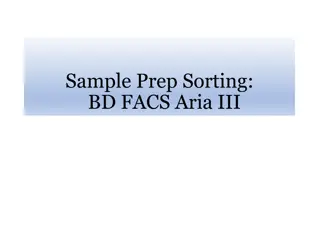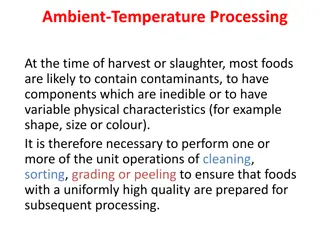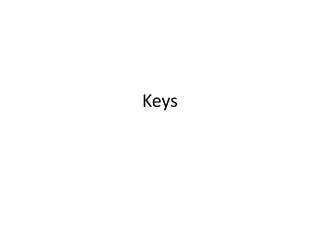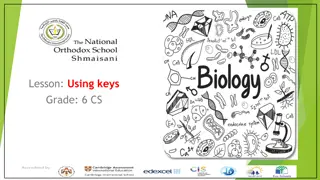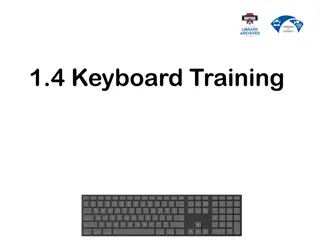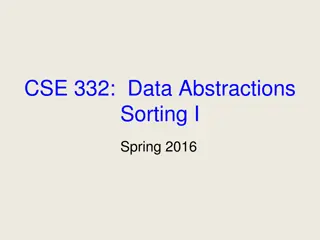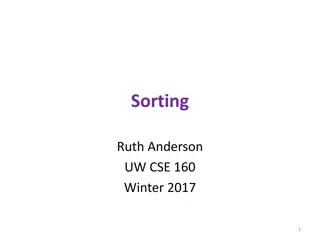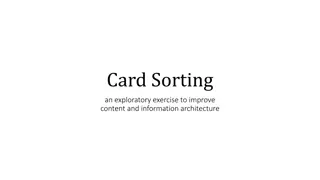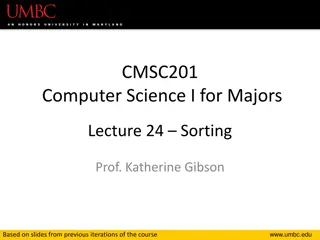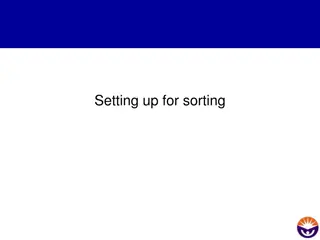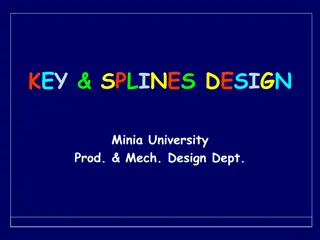Understanding Classification Keys for Identifying and Sorting Things
A classification key is a tool with questions and answers, resembling a flow chart, to identify or categorize things. It helps in unlocking the identification of objects or living things. Explore examples like the Liquorice Allsorts Challenge and Minibeast Classification Key. Also, learn how to create a simple classification key for buttercups. Tips for devising effective classification keys are provided. Embrace the concept of branching databases to classify various items.
Download Presentation

Please find below an Image/Link to download the presentation.
The content on the website is provided AS IS for your information and personal use only. It may not be sold, licensed, or shared on other websites without obtaining consent from the author. Download presentation by click this link. If you encounter any issues during the download, it is possible that the publisher has removed the file from their server.
E N D
Presentation Transcript
Classification Keys A classification key is a set of questions and answers for identifying something or deciding which group it belongs to. It often looks like a flow chart and is also called a branching database. It can be thought of as a key for unlocking the identification of an object or a living thing.
The Liquorice Allsorts Challenge! You will need to use a packet of sweets that contains sweets with different colours and shapes - liquorice allsorts and dolly mixtures work well. Choose about six different sweets and create a branching database to sort the sweets. You should use about five questions to do this, each needing a yes or no answer. Think of a starting question and experiment by moving the sweets around and using different questions. Remember to use the colour, number of colours and shapes of the sweets to create your questions. There is an example on the next slide to help you.
Classification keys or branching databases can be used to identify all sorts of things! Photo: Danny Nicholson
Minibeast Classification Key Does it have legs? YES NO How many legs? Does it have a shell? 6 8 14 More than 14 NO YES Appears to have one-part body 1 pair of legs per body segment 2 pairs of legs per body segment Is the body divided into segments? Obvious head and abdomen Insect Woodlouse Snail Spider Harvestman Centipede Millipede YES NO Worm Pupae & Larvae Slug Here is a branching database to classify minibeasts. Can you see how it works?
Create a simple classification key for buttercups The buttercup is not one species but an entire genus consisting of many species. At first glance, they may all look similar but there are small differences, e.g. the number and shape of petals. It is these differences that Linnaeus used to classify plants many years ago. Look closely at the buttercup pictures and identify the differences between the flowers. You should then create your own simple classification key which will enable people to identify which species is which.
Tips for Devising Classification Keys The first thing to do is look for an obvious difference between the items that allows them to be divided into two groups. Then look at each group and work out a question that will separate them into two more groups and so on. It is helpful if you have the pictures cut out. Do a rough version first. This means you can experiment with moving your pictures around as you think of questions that will separate one plant from another. You will need the six pictures of buttercups to classify.






